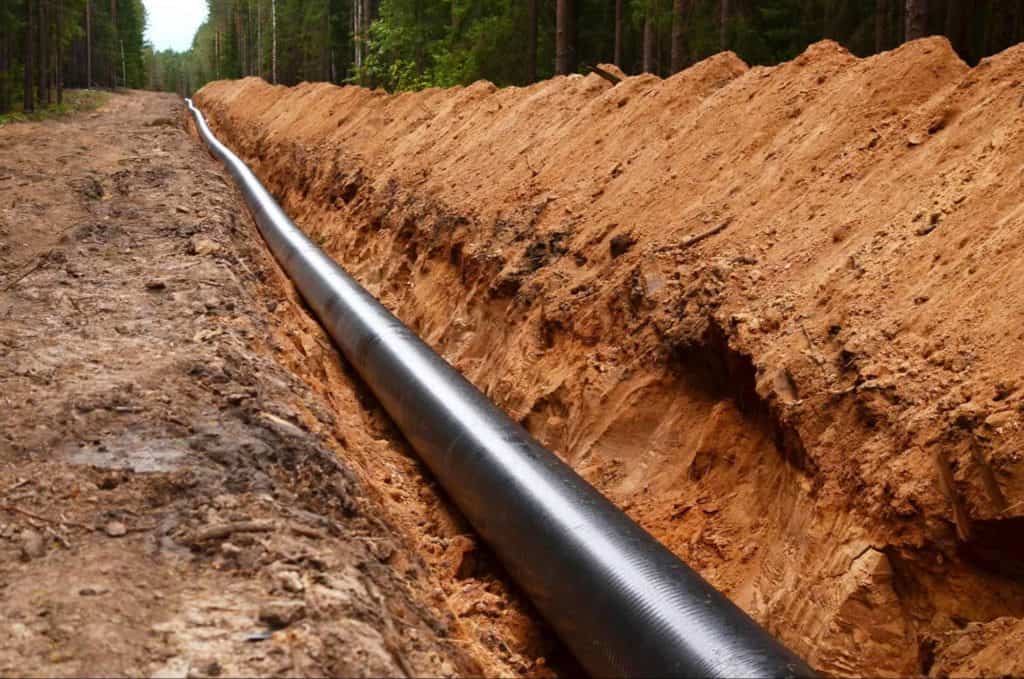Increase NDT Probability of Detection in Midstream Oil and Gas Operations

The processing, storage, and transportation of oil and gas is an industry segment fraught with risks. A small leak can lead to billions of dollars in costs, safety issues, and operational interruptions. Even worse is that the problem is usually not apparent until there’s an event that leads to massive property damage or lost lives. This is why having a high probability of flaw detection in nondestructive testing (NDT) for midstream oil and gas operations is incredibly crucial.
Accurate NDT can help companies discover issues with their pipelines, tankers, and other oil production equipment before it becomes a massive problem. Of course, most midstream oil and gas companies have infrastructures that are challenging to test. Leveraging more sophisticated focusing techniques to gather more comprehensive data offers opportunities to improve the probability of detection in NDT for midstream oil and gas companies.
How Hydrogen Damages Midstream Oil and Gas Assets
Hydrogen may be the most abundant chemical in the known universe, but it’s also the bane of midstream oil and gas operations. One reason is a phenomenon known as the high-temperature hydrogen attack. In a high-temperature environment, hydrogen can react with the chemicals in steel, resulting in methane forming in grain boundaries. This can eventually result in cracking or fissures that will grow larger over time and ultimately lead to a rupture.
The next issue is hydrogen embrittlement. This process can occur in relatively low temperatures, as long as there are three key components: a vulnerable material, hydrogen diffusion, and stress. When these factors are present, metal can develop voids or bubbles that make it brittle. Continued pressure will eventually cause spills.
The tricky part of both these processes is that there’s no way of knowing exactly when they’ll cause assets to fail. Issues could occur in weeks or take years to develop. The only way to monitor for them is through regular inspections.
Phased array ultrasonic testing (PAUT) is one of the most popular methods of monitoring for defects. Pushing sound waves into the material and then listening for echoes helps to locate flaws. However, this process isn’t perfect. Assets can be huge, and flaws extremely small. Finding these tiny fissures and early warning signs of damage is a bit like locating a needle in a haystack.
More exacting oil and gas industry NDT methods are necessary to detect flaws when it’s still possible to resolve them. Advances in NDT technology have allowed the creation of two specific processes that increase the probability of detection in NDT: full matrix capture and the total focusing method. Combining these two methodologies helps inspectors locate small flaws that may be challenging to discover through standard means.
Increasing the Probability of Detection in NDT with TFM
Full matrix capture (FMC) is an acquisition strategy that centers on collecting data related to the transmissions sent and received by elements. Each element transmits a single soundwave, and every single element receives the return transmission. This process is repeated until a full matrix is collected for the part under inspection. For example, if a probe uses 64 elements, it would create a grid of 4,096 a-scans. Of course, this massive amount of data requires a sophisticated strategy to decipher it. The total focusing method (TFM) is the algorithm that makes sense of the data collected during the FMC.
The TFM turns this data into pixels and the pixels use a dedicated frame of focal law. The pixels can be evaluated live or stored in each different probe position. Theoretically, this process should provide an ideal per-pixel focal point. Altogether, this creates high-resolution images that make it easier to detect flaws when compared to standard ultrasonic NDT testing.
| Learn more about FMC and other advanced focusing techniques in our webinar! |
Zetec offers the TOPAZ 64—a portable PAUT device—to allow companies to take advantage of the higher probability of detection created when leveraging FMC and TFM. This works in conjunction with our UltraVision software for providing real-time imaging and data analysis. Its accuracy and ease of use make it ideal for meeting the many challenges present in midstream oil and gas inspections.
Companies that process, store, and transport oil and gas have many responsibilities and a significant amount of expensive equipment to manage. The probability of detection in their NDT processes must be high. For certain inspection applications, leveraging both FMC and TFM allows them to increase their accuracy by providing more in-depth imaging based on greater data stores. While achieving 100% confidence in every inspection can be challenging, the ability to process more complex, sophisticated data faster and clearer can get companies as close as possible to perfect detection every time.
Zetec provides solutions for increasing the probability of detection in NDT processes for the oil and gas industries while also offering portable, sophisticated technology ideal for field use. Visit our contact page to learn more.

Zetec’s designers are industry-leading experts in ultrasonic and eddy current technologies, and we can help you navigate any of our NDT testing solutions or devices.
